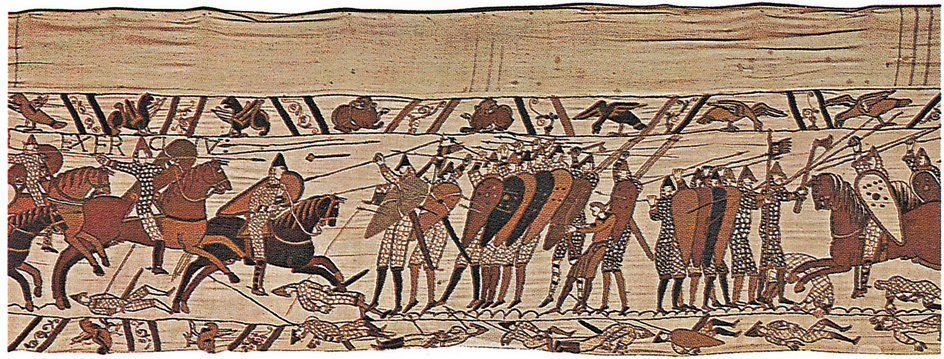Hastings, << HAY stihngz, >> Battle of (Oct. 14, 1066), marked the beginning of the conquest of England by William, Duke of Normandy. Historians rank it among the major battles that changed the course of history.

Harold Godwineson was chosen king of England in 1066, after Edward the Confessor died. But William of Normandy claimed that Edward, his cousin, had promised him the English throne. Harold prepared to defend the coast against an attack, as William enlisted knights from Normandy and northern France. But the king of Norway suddenly invaded northern England to claim the throne. Harold took his troops north on a forced march. His Anglo-Saxon forces defeated the Norse near York.
During Harold’s absence from the southern coast of England, William landed his army without opposition. Harold hastened south with his weary forces and gathered such militiamen as he could from the south. He met William’s invading troops at the hill of Senlac, near the town of Hastings. Harold almost won a second major victory in three weeks in the daylong battle. The details of the fighting are unclear. But historians think Harold’s men held the top of the hill. Then the Normans pretended to retreat in disorder, causing the English militia on the flanks to rush down the hill in pursuit. The Norman knights split the English formation, cutting the separate elements of the enemy army to pieces. Harold was killed, probably by a Norman arrow. But it took William five more years to complete his conquest.
See also Bayeux Tapestry ; Harold II ; William I, the Conqueror .
